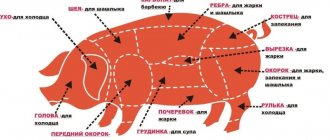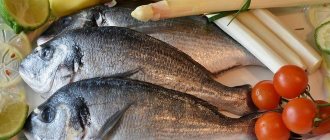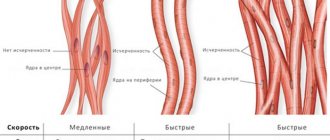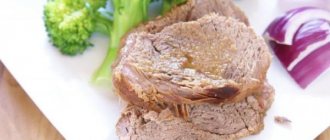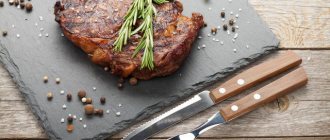Lean meat is included in the pyramid of proper nutrition, as it is part of a balanced diet, which is based on plant foods. This food pyramid focuses on foods that nourish our bodies, maintain energy over time, provide nutrients and have healing properties. Here we look at lean meat – what it is and the health benefits of eating it.
Recommended lean meat intake per week
Nutritionists recommend eating lean meat 1-3 times a week, 50-100 grams. But if you are a vegetarian or vegan, you need to replace animal products with plant-based protein foods. Each person's needs are unique. While some people feel great eating a well-balanced vegetarian diet, others cannot do without meat. Animal products provide the body with large amounts of absorbable vitamin B12, iron and calcium. Therefore, people who choose not to consume meat should ensure adequate intake of these essential nutrients. Consult a registered dietitian or nutritionist regarding your individual needs.
Product value
Due to its rich composition, the benefits of beef for the human body are very great:
- The protein contained in meat is easily absorbed by the body and serves as a valuable building material for tissues.
- Micro and trace elements nourish muscles and bones.
- Vitamin C ensures the strength of vascular walls, A is useful for the visual organs, B12 and B6 contribute to better absorption of iron, PP is needed for the production of enzymes.
- Boiled beef included in the menu helps heal wounds, burns, injuries, and speedy recovery from infectious diseases.
- Since beef has little fat and no carbohydrates, it can be eaten by people with diabetes.
Nutritionists consider beef meat suitable for use in dietary nutrition.
Saturated fat content
- Lean meats contain less than 10 grams of total fat for every 100 grams, which is significantly less than fattier meats, but even lean meats contain some saturated fat.
- In a typical diet, the majority of fat comes from animal products.
- Eating too many foods high in saturated fat can increase blood levels of low-density lipoprotein (LDL) and total cholesterol, which are risk factors for heart disease.
- Diets high in saturated fat may also contribute to the development of obesity, cancer, arthritis, diabetes and chronic pain.
What is the composition and how many calories are in beef?
One hundred grams of beef contains:
- 19 grams of protein.
- 15 grams of fat.
- 218 kilocalories.
The ratio of fats and proteins is maintained in meat regardless of the category of beef and method of preparation .
There are practically no carbohydrates in beef.- In addition, 100 gr. beef have the following composition: 1.71 gr. ash, 6 mcg of folic acid, 67.4 mg of choline, 4.8 mg of vitamin PP, as well as vitamins B1, A, B2, B5, C, B6, B12.
- Potassium per hundred grams of meat is 289 mg, phosphorus 175 mg, sodium 68 mg, magnesium 19 mg, calcium 12 mg, iron 2 mg, zinc 4.55 mg, copper 63 mcg, manganese 10 mcg, selenium 14.2 mcg.
- Beef also contains proteins - collagen and elastin.
Protein and vitamin content of beef
- Boiled beef contains protein in the amount of 25.8 g, fat - in the amount of 16.8 g.
- The calorie content of cooked meat does not exceed 254 kcal.
- In addition, it contains trace elements and B vitamins. There is also vitamin PP and E.
From the chemical elements that boiled beef carries, you can make up half of the periodic table:
- Manganese
- Phosphorus
- Zinc
- Iron
- Cobalt
- Molybdenum
- Magnesium
- Calcium
- Nickel
- Potassium
- Sodium
- Chlorine
- Fluorine
- Chromium
- Copper
- Sulfur
- Iodine
- In fried beef, the number of kilocalories increases to almost 400.
- But in beef stew, the calorie content drops to 200 kcal .
- Baked beef has the fewest kilocalories - only about 167
Ideas for Eating Healthy Lean Meats
- When ordering lean meat at restaurants, make sure it is prepared in one of the following ways: boiled, steamed, grilled or baked.
- To reduce saturated fat and calories, avoid eating battered meats and fried meats in oil or covered in creamy sauce.
- Experiment with lean meats when preparing your favorite recipes, replacing fattier meats with them.
- Eat lean meat up to 3 times a week, rather than daily.
- Use lean meat to flavor your food, not as a main dish.
- Limit your lean meat intake to 50-100 grams per serving.
- To reduce the amount of meat in a recipe, replace half with beans, mushrooms, vegetables or soy products.
- Whenever possible, choose products of animal origin, the packaging of which has a mark indicating that the meat is organic (domestic) and the animal was raised without the use of hormones, antibiotics, fed with natural food for it, and/or it is a wild animal.
- If possible, buy lean meat at markets from local farmers and private owners who keep a small number of livestock and poultry. You will be able to ask questions and find out in what conditions the animals were raised and what they were fed.
Was this article helpful to you? Share it with others!
Beef is a very healthy and tasty meat, but it is not easy to cook. The taste of a dish depends not only on the quality of the product. It is important to be able to choose the right piece to use. If you can grind the hard pulp into minced meat in a meat grinder, then it will not be possible to stew it.
A large carcass is cut up by butchers in accordance with generally accepted standards. The buyer must know what to look for. Today we’ll figure out together how the softest part of beef is for stewing.
Advice from seasoned chefs and gourmets will allow you to arm yourself with knowledge that will help you not get lost in the market. The best beef will make an amazing dish, but first read the article to the end.
How to cook better: recipes for dietary meat dishes
Meat is one of the main sources of protein, which ensures the functioning of the body and satisfies the feeling of hunger. To minimize cholesterol in food, proper cooking methods must be used. People who want to lose weight are recommended to boil, bake or steam meat. At the same time, you should limit the addition of salt and seasonings to food.
Why do you need to bake and how to do it?
Baked dishes are characterized by the preservation of not only useful properties and characteristics, but also the appearance of aroma and natural taste. Another advantage of this method of cooking is that dietary meat, after heat treatment in the oven, comes out very juicy. You can bake either simply on a baking sheet or using a special sleeve or foil.
What are the features of steam cooking?
This method is most suitable for those who seek to completely eliminate even hints of harmful components from their menu. Steaming is prescribed by doctors for people with serious health problems, including stomach problems. To achieve a pleasant taste, you can add mushrooms, cheese or vegetables. For cooking, you can use special equipment in the form of a double boiler or multicooker. If they are absent - over a regular saucepan with bubbling water.
How to boil?
If a person has decided to become an adherent of a healthy lifestyle, then this method of cooking will help achieve variety in the menu, as it allows you to prepare food with many options. So, if the diet rules do not prohibit the consumption of meat with vegetables, then you can cook soup from these ingredients. The only clarification for this case: the meat will have to be boiled separately, and the vegetables will need to be stewed.
What is suitable for stewing
Beef bones are ideal for making broth or soup, but they are completely unsuitable for stewing. You need to take those pieces where there are few tendons, elastic flesh, and fat. It’s clear that nothing can be better than fillet. But not just any one will do. It is best to look at the market or store for selected parts of beef for stewing.
Attention! Cows have muscles of varying elasticity. The densest are those that are involved in movement (located on the limbs), the softest will be the muscle tissues that are not involved in walking (located along the back).
Spatula
An excellent purchase for stewing. Shoulder beef contains some tendons and connective tissue, but there is fat present. It takes a long time to simmer, but the pieces turn out juicy.
Other options for choosing beef for stewing
Having decided which part of the beef is best to use for stewing, you should not rush to purchase. From different sellers, even the same part may turn out to be completely different in taste. When buying a piece that is to be stewed, you need to pay attention to important details.
Color
Beef can be soft pink or deep red. It is better to take that piece of fillet or shoulder that has a healthy red color. This indicates that it is fresh and taken from an animal that is quite young. If the color is very dark, there are streaks of yellowish fat, you should look for another product.
This meat will be tough because it comes from old cows. Even brownish beef can be identified. From its appearance we can conclude that it went on sale a long time ago. There should be no stains on the cut.
Attention! Potassium permanganate is sometimes used to color beef. To avoid falling into the hands of scammers, you need to evaluate the color of the fat layers. If they are reddish, then a dye was used.
Freshness
There are three types of beef sold on the market:
- Steam room . From a freshly killed animal. It is advisable to wait 3-4 hours for the meat to cool, only then begin processing.
- Chilled . Keeps fresh for up to 48 hours, not frozen. It has excellent taste and is perfect for stewing and preparing other equally tasty dishes.
- Frozen . Sold in frozen pieces. Must be stored during the period of sale in special refrigerators at subzero temperatures. If the ice crystals are pinkish in color, it means the beef has been frozen multiple times.
Comments
- @samurayko, this part is also called shank)
- I take the beef pulp at the meat lover, they also have a children's corner. I come and say: for me to feed the baby. For meat, we eat turkey, beef, and recently introduced rabbit.
— @samurayko, I also know that it is not advisable to give veal to children
— @telurka @belaia thank you) so many names, at least I could remember them

